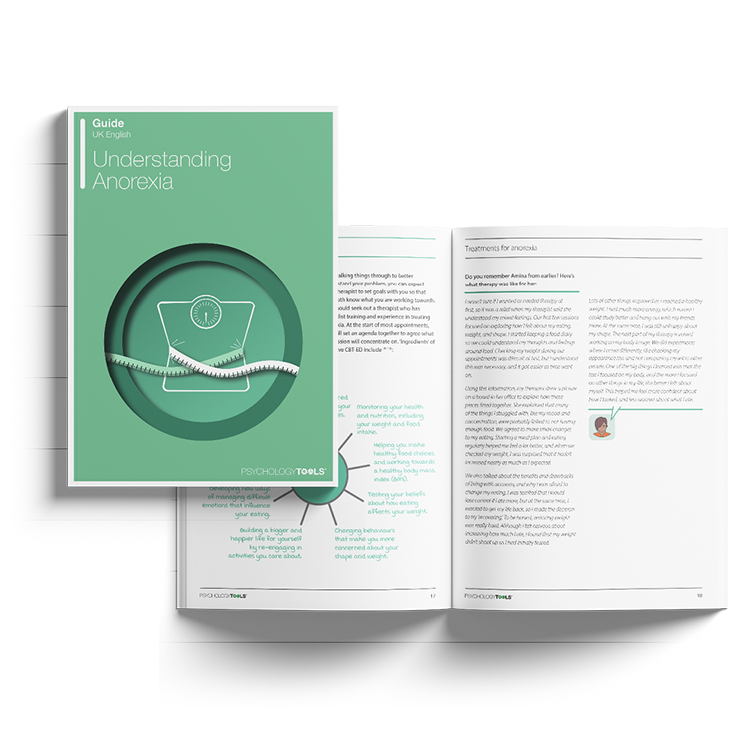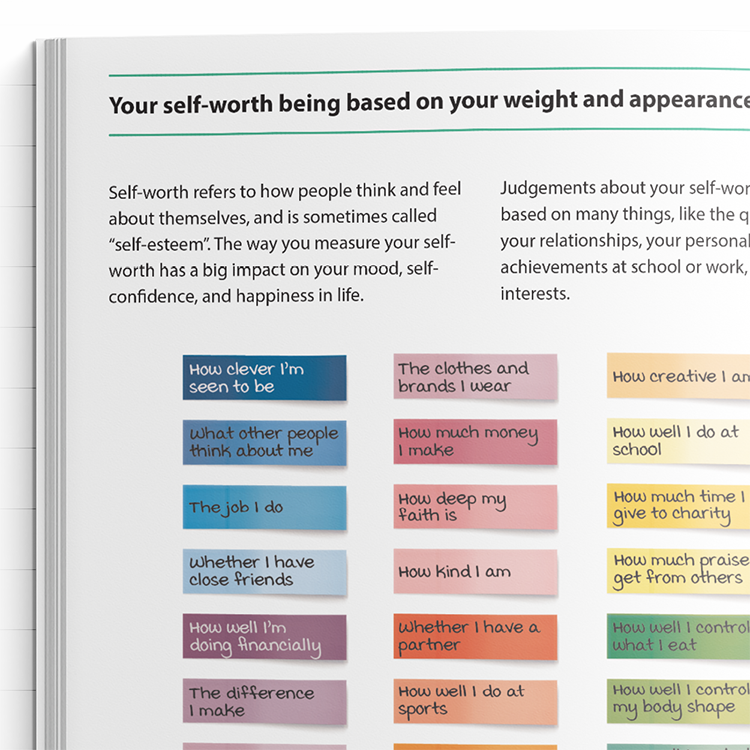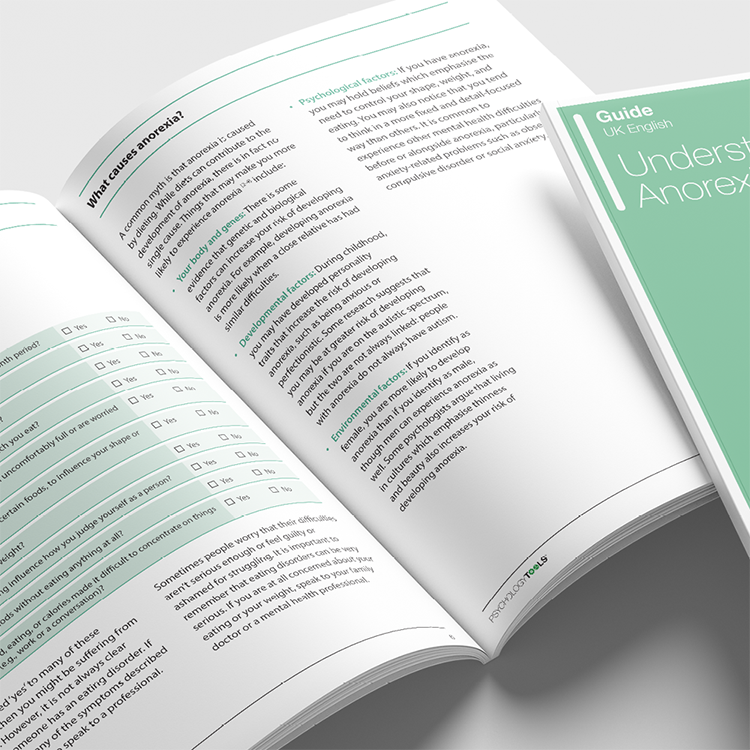Guide (PDF)
A psychoeducational guide. Typically containing elements of skills development.
An accessible and informative guide to understanding anorexia nervosa (AN), written specifically for clients.

A psychoeducational guide. Typically containing elements of skills development.
To use this feature you must be signed in to an active account on the Advanced or Complete plans.

Our ‘Understanding…’ series is a collection of psychoeducation guides for common mental health conditions. Friendly and explanatory, they are comprehensive sources of information for your clients. Concepts are explained in an easily digestible way, with plenty of case examples and accessible diagrams. Understanding Anorexia Nervosa is designed to help clients with AN understand more about their condition.
This guide aims to help clients learn more about anorexia nervosa (AN). It explains what AN is, what the common symptoms are, and effective ways to address it, such as cognitive behavioral therapy (CBT).
Clients working to understand the thoughts, behaviors, and emotional factors that maintain their eating disorder and support recovery.
Identify clients who may be experiencing anorexia nervosa (AN).
Provide the guide to clients who could benefit from it.
Use the content to inform clients about AN and help normalize their experiences.
Discuss the client's personal experience with AN.
Plan treatment with the client or direct them to other sources of help and support.
It is common for people to feel conscious of their eating, but when restrictive dieting and weight loss become extreme, it may be a sign of anorexia nervosa (AN). AN can have serious impacts on both physical and mental health. Furthermore, it is estimated that between 1 and 4 out of every 100 people will experience anorexia nervosa at some point in their lives. The good news is that effective treatments are available, including cognitive behavioral therapy (CBT).

Just enter your name and email address, and we'll send you Understanding Anorexia (English US) straight to your inbox. You'll also receive occasional product update emails wth evidence-based tools, clinical resources, and the latest psychological research.
Working...
This site uses strictly necessary cookies to function. We do not use cookies for analytics, marketing, or tracking purposes. By clicking “OK”, you agree to the use of these essential cookies. Read our Cookie Policy